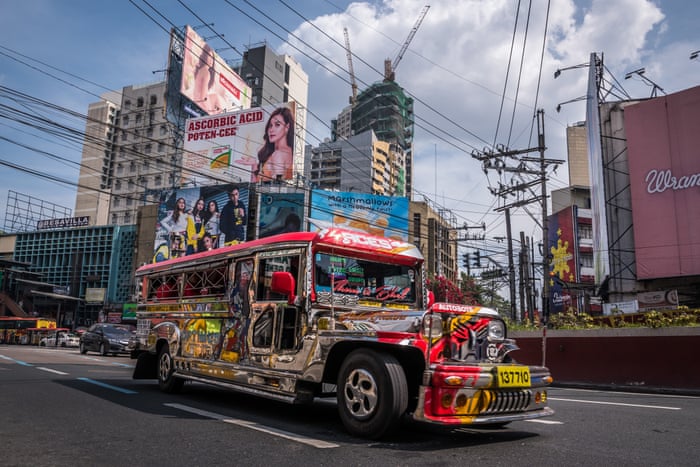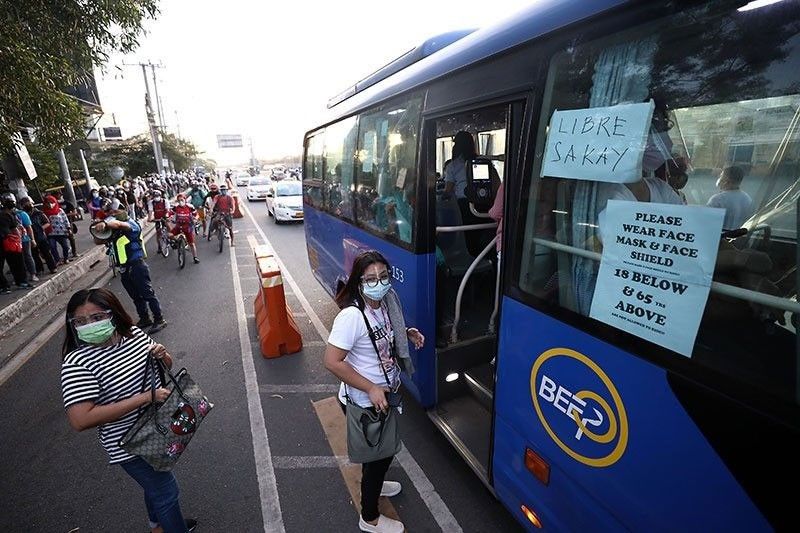Transit Advertising Philippines: An Ingenious Method to Advertise
Transit Advertising Philippines: An Ingenious Method to Advertise
Blog Article
Understanding the Function of Transit Marketing in Enhancing Brand Name Exposure and Consumer Involvement
Transit marketing has actually arised as a crucial component in the advertising and marketing landscape, supplying special possibilities for brand names to elevate their exposure and involve consumers efficiently. With the ability to reach a varied and restricted audience throughout their day-to-day commutes, these advertising and marketing techniques are not merely concerning visibility; they have to do with creating meaningful links with prospective consumers. As we discover the diverse advantages and cutting-edge techniques within transportation advertising and marketing, it comes to be essential to think about exactly how these components collectively affect consumer understanding and habits, raising inquiries regarding their lasting effect on brand name loyalty.
Meaning of Transportation Advertising
Transportation advertising and marketing refers to the practice of advertising products, solutions, or brands through ads positioned around public transport systems. This form of marketing encompasses a range of placements, including posters on buses and trains, digital screens at transportation terminals, and covers on the outside of automobiles. It intends to get to a varied target market, exploiting on the high foot traffic associated with public transit.
Transportation advertising is strategically placed to record the attention of travelers, who commonly invest substantial time waiting or taking a trip. By integrating ads into the everyday routines of people, brands can develop a lasting impression and foster brand acknowledgment. The medium is especially effective in urban settings, where mass transit is a main setting of traveling.
In addition, transit marketing can facilitate local targeting, allowing services to get to certain demographics based upon transit courses and station areas. As urban populaces grow and making use of public transport rises, this advertising and marketing method has actually gotten prestige as an important part of incorporated marketing strategies. The vibrant nature of transportation marketing, integrated with its capacity to engage customers in a restricted setting, highlights its significance in contemporary advertising and marketing methods.
Benefits of Transit Advertising
The performance of transit marketing hinges on its capability to deliver a multitude of benefits to brands seeking to improve exposure and interaction. One of the primary benefits is the substantial reach it supplies; transportation advertisements can properly target diverse demographics throughout city locations, reaching both pedestrians and commuters alike. This wide exposure considerably increases brand name recognition.
Another benefit is the high frequency of impacts. As transit vehicles travel along well-known routes and quit at multiple locations, they create recurring direct exposure that reinforces brand name messages. This frequency promotes familiarity, which is vital in customer decision-making.
Transit advertising is additionally cost-efficient contrasted to other media platforms. Provided its large reach and possibility for high impressions, brands typically experience a reduced cost per thousand impacts (CPM), optimizing their advertising budget.
Furthermore, transportation ads can produce a sense of area connection. By aligning with local transit systems, brands can reverberate with local target markets and foster a sense of regional satisfaction. This local strategy enhances brand name commitment and interaction, making transit advertising and marketing an engaging choice for companies aiming to solidify their presence in the marketplace.

Effective Methods for Transit Projects
To take full advantage of the influence of transportation campaigns, brands must take advantage of calculated planning and implementation tailored to their target audience. First, identifying the market attributes of the audience look these up making use of public transit is important. This enables brands to develop individualized messaging that reverberates with prospective clients.
Next, picking the right transportation tools is necessary. Whether using bus covers, subway posters, or electronic displays, each tool has unique benefits that can boost exposure. For example, vivid visuals on bus covers can attract attention, while digital ads can be upgraded frequently to mirror timely promotions.
Moreover, integrating a cohesive branding method across transit systems ensures uniformity and enhances the brand's identification. Utilizing eye-catching layouts and remarkable taglines will enhance brand name recall among travelers.
By employing these strategies, brand names can successfully harness the potential of transportation advertising, cultivating higher recognition and link with their target audience. Ultimately, a well-executed transportation project can drive significant growth in brand name exposure and customer engagement.

Measuring Influence and Interaction
In reviewing the efficiency of transit marketing campaigns, precise dimension of influence and involvement is vital for brands looking for to enhance their advertising and marketing techniques. Metrics such as reach, regularity, and impacts offer fundamental information to evaluate visibility. Assessing these variables aids figure out exactly how lots of potential consumers are exposed to the advertisements during their daily commutes.
Involvement can be additional assessed with consumer interactions, such as website traffic, social media sites points out, and straight actions to calls-to-action included in the advertisements. Using devices like QR codes or one-of-a-kind Links can assist in tracking of customer habits directly connected to transportation campaigns. Studies and feedback devices likewise serve as important approaches to gather qualitative data on customer assumptions and recall of the promotion.
In addition, progressed analytics and acknowledgment models can correlate transit direct exposure with subsequent purchasing habits, supplying understandings into the roi. By using a thorough strategy that incorporates measurable and qualitative actions, brands can create a nuanced understanding of their transportation marketing impact. Eventually, this data-driven technique makes it possible for brand names to refine their projects, ensuring they reverberate effectively with target audiences and boost total brand name exposure.
Instance Research Studies of Effective Campaigns
Successful transportation marketing campaign work as engaging examples of exactly how efficient techniques can raise brand name exposure and interaction. Transit Advertising Philippines. One noteworthy situation is the "I Love New york city" project, which transformed the city's image and visit here brought in countless travelers. By making use of train ads, billboards, and bus wraps, the project developed a strong, natural brand identity, causing a substantial uptick in tourism and neighborhood company patronage
Another exemplary campaign is Coca-Cola's "Share a Coke" initiative, which leveraged transit marketing to individualize the brand experience. By featuring prominent names on advertising products across various transit platforms, Coca-Cola promoted a deeper emotional connection with consumers, encouraging them to share their about his experiences on social media.
In addition, the "Got Milk?" campaign successfully made use of mass transit advertisements to get to a wide target market, enhancing the message of the importance of milk in a well balanced diet regimen. The campaign saw a quantifiable boost in milk usage in target demographics.
These study show that when performed attentively, transportation marketing can considerably enhance brand exposure, foster consumer interaction, and drive measurable results, showing its crucial role in contemporary advertising methods. - Transit Advertising Philippines
Verdict
To conclude, transportation marketing offers as an essential tool for enhancing brand exposure and promoting customer interaction. By making use of strategically placed advertisements within mass transit systems, brand names can effectively reach diverse target markets and reinforce acknowledgment through regular exposure. The application of targeted messaging and cutting-edge strategies even more enhances the effect of transit campaigns. Inevitably, the capacity to gauge interaction and analyze successful study highlights the performance of transportation advertising and marketing in driving brand name commitment and consumer communications.
Transportation advertising and marketing has actually arised as a pivotal element in the marketing landscape, providing distinct possibilities for brands to raise their presence and involve customers efficiently.In addition, transportation advertising can promote local targeting, allowing services to reach specific demographics based on transit courses and station areas.In reviewing the performance of transportation advertising campaigns, exact measurement of influence and engagement is essential for brand names looking for to enhance their advertising and marketing strategies.Effective transportation marketing campaigns offer as engaging instances of exactly how effective techniques can boost brand name exposure and engagement.In final thought, transportation marketing serves as a vital device for enhancing brand name exposure and promoting consumer interaction.
Report this page